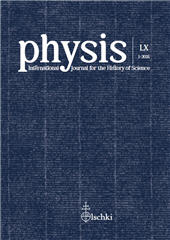L'ermeneutica galileiana in un inedito di Mersenne : le regole per interpretare la scrittura
P. 155-206
At the beginning of the Explicatio Novi Testamenti that he was writing at the time of his death (1648), Marin Mersenne, theologian and scientist active in the diffusion of Galileo's works, which he translated into French even after his condemnation, includes six Rules for the interpretation of sacred scripture that must be observed by interpreters in which, even without quoting it, he bases his discussion of Galileo's hermeneutic proposal in the Lettera a Madama Cristina di Lorena: separating the religious and doctrinal teaching of scripture from the scientific. Mersenne uses the same Augustinian auctoritates and goes over the central arguments of Galileo's writing to propose a new hermeneutics characterised by the hypothetical and probabilistic approach that characterises his own epistemology. In discussing Galileo's proposal, Mersenne identifies a hypothetical approach that he recommends not to natural philosophers, but to exegetes, who, in exposing questions pertaining to ‘natural truths,'
and adopting a sense that they consider ‘true' but which can then be disproved by a “very certain truth such as that of demonstration,” must adhere to the most probable sense. In this way, Mersenne identifies a third position between Galileo and Bellarmine, adopting a hypothetical approach consistent with his epistemology, which goes beyond instrumental and precautionary purposes or the need to simplify calculations. Mersenne reflected at length on Copernicanism, to which he was inclined, and in this article we also propose some unpublished documents that show his adherence to the heliocentric hypothesis before Galileo's condemnation. Subsequently, in the Regulae, the theologian separates the hermeneutic question from the debate on Copernicanism, and integrates it into his project: “Scriptura sacra […] non sit nobis tradita scientiarum docendarum gratia, sed ut saluti nostraeconsulat.” [Publisher's text]
146981 characters
-
store_in_same_fr
-
information
doiCode: 10.1400/300588
issn: 2038-6265


